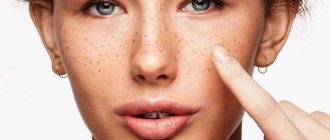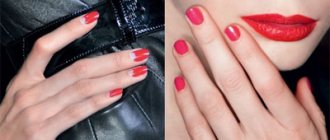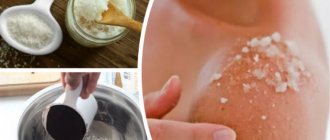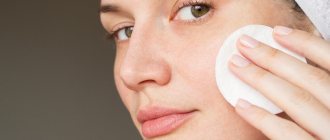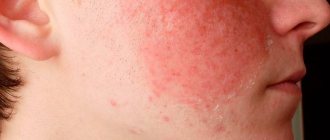Oily, dehydrated facial skin is the first sign that there is not enough moisture in the cells. A salvation for oily, dehydrated skin will be a special approach that will help solve the problem, as a result of which the feeling of tightness, redness, blackheads, discomfort, mild itching will disappear, fine wrinkles will smooth out, and elasticity will return.
There is an opinion that dryness and dehydration are the same thing. This statement is fundamentally incorrect. Experts call skin "dry" when it doesn't produce enough sebum to lubricate and protect it. In turn, the dehydrated dermis suffers from a lack of moisture. Although dryness and dehydration often go together, they should be treated differently.
Why does oily skin dehydrate?
There can be many common reasons for dehydration of oily skin: poorly chosen diet, exhausting exercise. But most often, regular use of aggressive skincare products leads to dehydration of the epidermis.
Our body loses fluid constantly: through evaporation, sweating, excretion, as a result of the work of internal organs and cellular processes. Add to this the loss of moisture due to central heating, air cooling, air travel, sports, hot climates and air conditioning - and you have quite a large volume of fluid required for daily replenishment.
Greater physical activity and intense training increase these losses. The human body can also lose moisture due to certain diseases and taking certain medications.
Any skin type can face this problem. When the body lacks fluid, it is immediately reflected in the appearance; the dermis becomes dry, dull and tight, and may begin to peel off. Very often, dehydrated skin is compared to a desert, which is quite fair, because cells lose one of their main components - water. Because of this, the epidermis becomes thinner and the complexion becomes dull.
Three ways to moisturize your skin - which one is right?
Spring has arrived and summer is coming, and with it our skin will need the most hydration. During the heating season, the skin also becomes dry and requires stronger hydration. You need to start fighting the problem of over-drying at the age of 25 and regularly maintain its humidity. Such care is the key to healthy, youthful skin after 50... Cosmetic science knows two types of skin moisturizing: the first principle is based on the natural moisturizing factor NMF - this is a complex complex of molecules of the stratum corneum that contribute to moisturizing inside the skin. The second principle of moisturizing is based on the action of sebum - a natural protective layer, the function of which is to prevent moisture from evaporating from the surface of the skin. In most cases, people do not have enough of their own NMF; their deficiency can be compensated for in various ways, for example, by adding various moisturizing components to creams: polysaccharides, urea, amino acids, microelements that are part of a person’s natural NMF. One of the most expensive and most luxurious moisturizing ingredients in cosmetics is hylauronic acid. It's no secret that hylauronic acid is widely used in cosmetology for biorevitalization and filling wrinkles. it attracts water molecules, forming a swelling that pushes out wrinkles, thereby smoothing out the surface of the skin and making the face look more youthful. Hylauronic acid comes in two types: high molecular weight is used for a lifting effect, it acts superficially. Its molecules seem to begin to cling to the upper layer of the epidermis, in other words, to our skin, and the skin feels as if something is supporting it. Low molecular weight hyaluronic acid acts differently by penetrating the skin and supporting it from the inside, and also gives a regenerating effect. Previously, hylauronic acid was obtained from cockscombs and the sclera of the eye. Now hylauronic acid is obtained biotechnologically, much like growing yogurt in a laboratory. However, our skin consists of several more components without which NMF would not be possible - this is glycerin, which is also present in our body and also attracts water molecules. All triglycerides (the main components of cell membranes) are decomposed by an enzyme into fatty acids and glycerol. Glycerol is a priori present in our body, so to say that it is a harmful component is not entirely true. Many people have read this ignorant misconception in some articles on the internet that glycerin dries out the skin. The misconception is that glycerin is not present in its pure form anywhere in cosmetics. There is a certain small percentage of it in creams, but sufficient to retain moisture. If 100% glycerin is spread on the skin, it will attract existing water molecules and dry out the epidermis. But to say that glycerin is in principle harmful is at least ignorant. Another controversial component of moisturizing cosmetics is urea. Urea is one of the components of NMF; it binds water molecules in the cream and in the skin to each other. Its function is to retain all this moisture. It should be especially noted that creams with urea are suitable only for very rough areas of the skin: for example, on the heels or elbows. Pedant Germans put in their creams exactly the amount of urea that is conventionally enough for a visible effect - no more, no less. Creams with 10% urea content perfectly moisturize the skin. But you won’t find urea-free hand moisturizer in so-called “mass market” cosmetics, and sometimes even for the face. Read the ingredients and see for yourself. From all of the above, we can conclude that the first method of moisturizing is rather chemical: retaining moisture inside the skin. And the second way - rather physical - is to put a barrier to evaporate moisture from the surface of the skin. In this context, it can be noted that the surface of our skin evaporates up to 800 ml of water per day. Another 1-1.5 liters are excreted naturally. Here’s simple arithmetic: 2-2.5 liters of water per day just to replenish the body’s reserves. If not, an imbalance in the functioning of the organs begins and the instinct of self-preservation inherent in nature will begin to store water. Either dry skin appears (at a young age) or swelling at an old age. Let's say we drank a lot of water, even if the capillaries reached and carried this water with the blood to the epidermis, there may simply not be enough elements there to retain the water. Or lack of sebum, dry air - water will evaporate and the skin will lose moisture, it will be dry and dehydrated. With the help of cosmetics, we try to replenish and compensate for the lack of sebum. But the question arises: how to properly use common vegetable oils to moisturize the skin? I found the answer to this question in an interview with the chief technologist of the Natura Seberika cosmetics brand, Alexander Stukalin, in one of the magazines. Further quote: Almost all oils can be applied to the skin to moisturize. For example, sea buckthorn oil, carrot oil, buretti in its pure form are orange in color because... rich in carotenoids, which is vitamin A, which stimulates collagen synthesis and fights oily skin. It will not work in its pure form. Olive oil has been known since ancient times to contain large amounts of oleic acid and vitamin E - one of the best antioxidants. Better known as the beauty vitamin. Wheat germ oil is amazing in its ability to restore damaged skin thanks to the same vitamin E. Flaxseed oil is extremely beneficial. High content of vitamin E. Pine nut oil is one of the richest in properties and composition - perfect for mature skin because... contains phytosterols necessary for collagen synthesis. Fashionable argan oil is very nourishing, especially for mature skin. Another very, very famous, inexpensive and extremely effective Shea butter. It melts in your hands, is perfectly absorbed into the skin and does not weigh it down. A few important points: if the skin is dry, oils are best applied to damp skin. First you need to give moisture, and then retain it. You should also not apply the oil in a thick layer - it takes a long time to be absorbed, and this is not very convenient. For a long-lasting moisturizing effect, it is better to apply emulsions - leave-in creams, lotions, serums. Now we talked about moisturizing the skin, or rather its surface layer - the epidermis. But a lack of vitamins in the diet will definitely affect not only your appearance, but also the health of the entire body as a whole and your skin in particular. Applying nourishing creams to the surface of the skin will not solve all problems. The main thing is our diet - correct and balanced. Dry skin can be caused by poor nutrition, hormonal imbalance, and an unhealthy state of the whole body. Traditional cosmetics use silicone creams: they cover the skin with an inert film, under which the skin does not breathe, but moisture evaporation does not occur. In natural cosmetics, the cream is based on vegetable oils consisting of triglycerides that imitate natural sebum, which contains up to 15% squalane! The same substance is found in oils, such as olive oil. End of quote. We can talk about the difference between natural cosmetics and pseudo-natural ones next time - if it is interesting to my dear readers!
Be always healthy, young and beautiful!
Don’t forget to click the “like” button if you liked the article and found it useful. I will be sincerely happy about this.
Symptoms of oily, dehydrated skin
If you have oily skin, signs of dehydration may not be as noticeable as if you have dry skin. This is a temporary or permanent condition of the dermis that can affect anyone and is characterized by certain symptoms. Below you can read the main ones:
- Peeling on the forehead, in the eye area, chin, wings of the nose;
- A feeling of tightness, while the skin becomes shiny and inflamed;
- Enlarged flabby pores;
- Dull complexion;
- During the day, dehydrated skin absorbs moisture from foundation applied to it. As a result, makeup comes off in spots;
- Loss of skin elasticity and firmness;
- Dry mouth, dry lips;
- Rare urination, dark urine;
- General fatigue, lack of appetite;
This is exactly how dehydration of the facial skin manifests itself, provoked by dry air, cold, scorching sun and heating appliances.
If you or someone you know has signs of severe dehydration, you should consult a doctor immediately. This condition is life-threatening, but can be quickly treated.
Don't despair if you find yourself with characteristic traits. Such a problem as dehydration of oily facial skin can be solved by a set of daily measures and the use of cosmetics, with which you can correct the situation even without the help of cosmetologists.
Summer is red and dangerous: how to deal with dry skin, age spots and oily shine
Do you think that summer is only about a beautiful caramel tan, silk sundresses and open verandas of restaurants? No matter how it is! What about runny makeup, oily shine on the nose, dry skin, and swollen feet? Let's find out how to cope with these problems so that the warm season becomes a complete pleasure.
Italians and Cypriots enjoy the warmth almost all year round. Perhaps that is why they are so smiling because they receive the necessary charge of ultraviolet radiation. We, pale-faced residents of the capital, see the sun at most four to five months a year, so for us the arrival of summer is a real blessing. However, the coin also has a flip side. Along with the long-awaited warmth, we also see in all its glory the accompanying problems associated primarily with skin care. The words of the poet immediately come to mind: “Ah, red summer, I would love you, if it were not for the dust, and the heat, and mosquitoes, and flies...” Even though a rare mosquito would fly to my twelfth floor, but from the ubiquitous dust and heat (Alexander Sergeevich is right!) There is simply no salvation even two centuries later.
Cleanliness is the key to health
In the summer, due to the heat, our skin loses (it’s scary to imagine!) half a liter of water every day. Well, when the thermometer rises above plus thirty, this figure almost doubles. And the face suffers first. A feeling of discomfort appears, the skin becomes dry, despite the pouring sweat. Therefore, it is so important to choose the right care during the hot period. Pay attention to cleansing lotions, foams, and washing gels. They should be soft, gentle and not contain aggressive components, such as alcohol or large particles. Let micellar water take up residence on your dressing table. After all, it cleanses the skin without injuring it, but, on the contrary, caring for it.
Photo: press materials
Micellar water from the Spanish brand of dermatological cosmetics Laboratorios BABE cleanses, tones and restores the skin microbiome. The powerful micellar system "Poloxamer 184" like a magnet attracts particles that need to be removed from the skin, so the product does not require rinsing and does not leave a sticky film. In addition to micelles, the product contains licorice (has an antioxidant and soothing effect, and also prevents the appearance of age spots) and betaine (has a moisturizing and anti-inflammatory effect).
Lighter than light
In the summer, you should avoid “heavy” nourishing creams so as not to clog pores and not disrupt metabolic processes in the skin. But they should be replaced by light moisturizers. After all, if there is enough moisture in the skin, all cellular processes will proceed optimally, while with a lack of hydration, the rate of regeneration worsens, the risk of inflammation increases, and premature aging starts.
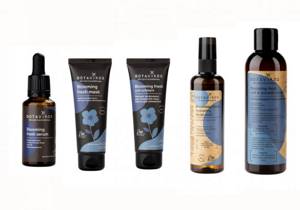
Photo: press materials
The new line of Blooming Fresh products from Botavikos for enhanced skin hydration provides rapid hydration, evens out skin texture, restores protective functions, and gives a fresh and rested look. The line is based on products with violet extract, which stimulates the formation of epidermal hyaluronic acid, significantly increases the level of moisture and elasticity of the skin, cloudberry extract, which gives a powerful antioxidant effect, nourishes with vitamins, returns a healthy, radiant complexion, essential oils of lime, mint, health, which help to gently cleanse the skin and prevent the appearance of imperfections.
Lip harmony
Your lips also require special care in summer. It is better to always have an SOS product in your purse.
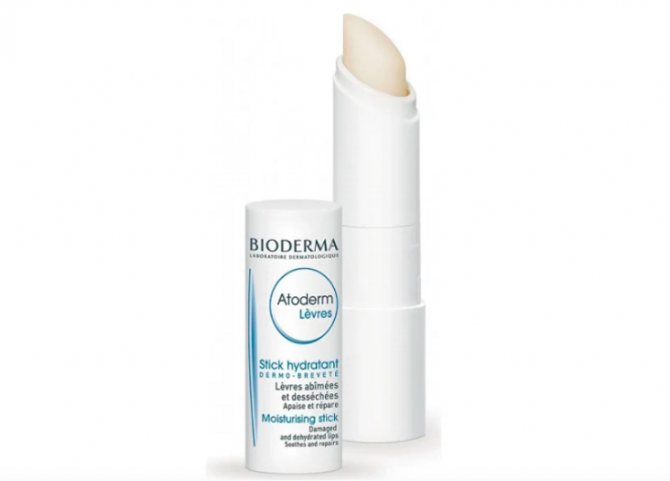
Photo: press materials
Atoderm lip stick from Bioderma softens, moisturizes, protects, and soothes the skin of the lips. The hypoallergenic formula guarantees optimal tolerability of the product.
Sun protection
Is it necessary to use sunscreen in the city? Necessarily. Especially if you have very UV-sensitive skin or want to keep freckles or age spots as inconspicuous as possible. And, finally, if you simply care about preserving your own youth.
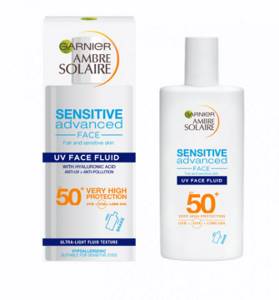
Photo: press materials
Garnier has a new product in their famous Ambre Solaire line - sunscreen fluid for the face FLUIDE VISGE ANTY-UV with a unique formula SAFE GUARD TECH Expert Protection SPF 50+. It perfectly protects against UVA and UVB rays, and also visibly moisturizes the skin - thanks to the hyaluronic acid in the composition. A nice bonus: the fluid can also be applied to the area around the eyes.
Body as evidence
Our body also requires special care in summer. And here the rules of care are the same: cleansing, moisturizing, nutrition. Therefore, use scrubs at least a couple of times a week. Choose those that simultaneously moisturize and nourish the skin.
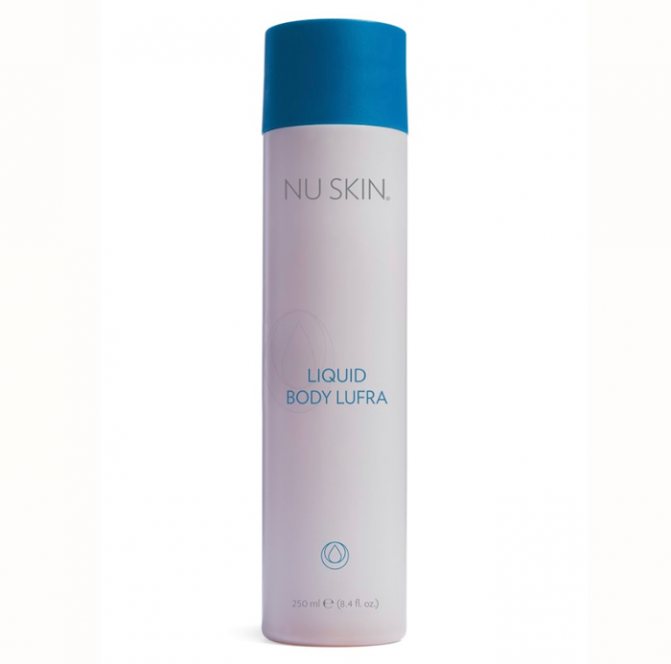
Photo: press materials
Liquid Body Lufra Gel Scrub from NU SKIN literally renews the skin, gently removing any impurities and restoring its healthy glow. Finely ground walnut shells gently but effectively exfoliate rough skin on elbows, knees and heels, as well as other areas that require special attention. And life-giving aloe vera extract soothes and nourishes the skin, making it smoother, softer and silkier.
After cleansing there is a stage of moisturizing and nutrition. SKIN FOOD cream from Weleda, a true legend of the brand, will help solve both of these problems. The universal nourishing cream Skin Food was created back in 1926. And for decades, this cream has been the embodiment of Weleda's ideas.
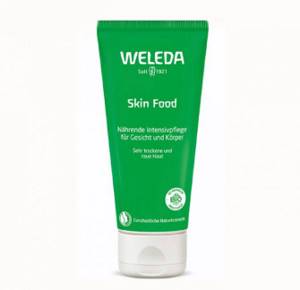
Photo: press materials
This cream has a unique composition - all ingredients are selected and balanced in such a way that the cream copes with a whole range of tasks: • SOS cream for rough skin of hands, elbows, knees and heels; • Healing of chapped lips; • Nourishing face mask; • Simple and quick cuticle care; • Primer (makeup base); • Soothing care for inflamed and cracked skin; • Treatment of split ends.
In the summer, SKIN FOOD is an ideal helper for our hands (due to the constant use of antiseptics, they, poor things, suffer the most) and feet (open shoes are, of course, beautiful, but sometimes destructive for the heels). Fans of the legendary cream can have a limited edition at the Palchiki salon chain from August 1 to August 31. The procedure includes the most popular service in this chain of salons - the “All fingers at once plus” complex and a special mask for feet and hands with multifunctional nourishing cream from Weleda.
One of the main advantages of the procedure is that when using 100% natural SKIN FOOD cream as a mask, it will restore a well-groomed appearance to your hands and feet, as well as significantly improve the condition of your skin. SKIN FOOD has a unique composition in which specially selected ingredients are balanced in such a way that they allow you to cope with a whole range of tasks: healing, nutrition, care and improvement of your skin tone.
The procedure comprehensively solves the problems of inflamed, rough and tired skin of the hands and feet, and thanks to the presence of a large percentage of essential oils in the SKIN FOOD cream, it also creates an aromatherapy effect.
TOP 15 ways to make your skin non-oily at home
Remember: only a qualified cosmetologist can accurately determine your skin type. Similar manifestations can sometimes be seen on both combination and normal skin, and in some cases even on dry skin. For women with combination skin or oily epidermis in the T-zone, a complex treatment for the entire face is suitable, this will help improve the condition of the skin as a whole. But before using any medicine, consult a specialist.

Masks are the best solution to the problem. Of course, to do them, you will need to find free time each time, but you will see the result after just a couple of sessions. It would be correct to undergo a whole course of such procedures, which will take about 30 days:
- Yeast mask. How to make your skin non-oily? You need to take about 7–10 g of yeast, add just a few drops of milk and apply the mixture to your face. These two components do an excellent job of regulating sebum and making the complexion uniform.
- Oatmeal mask. Famous Hollywood divas are very fond of oatmeal masks - they are simply miraculous. You need to do the following: mix the flakes with egg white and apply to the skin for 10-20 minutes. With continued use, your skin will look healthy and radiant.
- A mask made from lemon juice, sour cream and honey gives a wonderful effect. Mix the ingredients in equal proportions and apply to your face for about 15-20 minutes. After the procedure, the skin will become velvety and very soft.
- Clay perfectly fights the excessive secretion of sebum. Pour the clay powder for a couple of hours, and when the mixture becomes homogeneous, make a mask. This mask eliminates inflammation.
- Fresh cucumber has a beneficial effect on the skin. Cut it into rings and place it on your face. You can chop the cucumber and mix it with sour cream or honey.
- Make a parsley mask. Boil the sprigs of greenery in a small amount of water for 15–20 minutes. Then pour the broth over the oatmeal flakes and mix until it becomes a paste. The decoction itself can be used as a lotion.
- Potatoes will also help get rid of excess oily skin. You need to grate it, add whipped egg white and a little salt. You can keep this mixture for quite a long time; potatoes are the most gentle vegetable. The maximum procedure time is 30 minutes.
- You can make a mask of lemon and linden honey; it will be a salvation for those who experience pustular inflammation. The mixture dries the skin and nourishes it.
- In the summer, try masks made from fresh berries and fruits: apples, strawberries, cherries, apricots.
- Cleanser recipe: make a mixture of mineral water and a few tablespoons of grapefruit juice. You can either wash your face or spray your face with this liquid throughout the day.
- Try to moisten problem areas with sauerkraut juice once a week. The brine must be diluted with water in equal parts. Soak the bandage with the resulting liquid and apply it to your face for about 10 minutes.
- Use ice washes made from herbal infusions. You can add oils to infusions: olive or burdock. After this treatment, the face will become tightened, the pores will narrow, and the color will even out.
- Apply kefir or kombucha to clean skin. These products stabilize the functioning of the sebaceous glands well.
- You can make a decoction or infusion of chamomile, it will dry out acne and improve your complexion.
- A mixture of glycerin and lemon juice will be an excellent alternative to lotion.
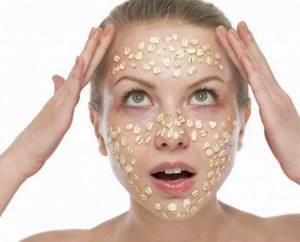
What factors affect facial skin?
Stress
No matter how we try to avoid it, stress is present in the lives of each of us. For some it is irritation, for others it is overwork. A deterioration in mental balance can be caused by problems at work, conflicts in the team, family, or negative news. Stress is one of the main causes of skin problems, as the production of the hormone cortisol increases, which leads to loss of moisture and dryness of the skin.
Advice: learn to relax, negative emotions leave a mark on your face. If bad thoughts come to you, take a few big breaths, they will improve blood circulation and you will feel calmer.
Learn how to properly moisturize your skin at home
Nutrition
It should be balanced and regular. Food plays an important role for physical and psychological health. It’s very good if your menu contains the required amount of proteins, fats, carbohydrates, fiber, and vitamins. It is generally accepted that it is correct to eat 5-6 times a day in small portions, depending on your weight and health.
Advice: make a nutrition schedule, follow it, eating at the same time will be beneficial for the body and the condition of the skin.
Age-related changes
Every year the skin loses moisture, elasticity, and becomes less beautiful. But this is an irreversible process, which means everything is fine. Self-care is the best way out of the situation.
Seasonal influence
A very common question that many ask themselves is: “How to moisturize your facial skin at home in winter?” Winter is precisely the time when our face needs special care; the skin becomes dry under the influence of low temperatures. It is important to note that, in addition to moisturizers, it is necessary to use cosmetics that will protect against the effects of frost. It’s good if the composition contains glycerin, vitamins A and C, lanolin, and beeswax. With the arrival of spring, care is still needed. The face is “tired” after winter and to maintain a good appearance you need to use a cream in which the main components are plant extracts.
In summer it is more difficult to take care of, the skin is oily, rashes appear, you need to wash your face more often. Do not forget about the negative effects of ultraviolet radiation, that is, the sun. Many people go on vacation to the sea, where they sunbathe. At such moments, use sunscreen, they will save your skin. Autumn will not be an exception; during this period it is necessary to make nourishing masks 1-2 times every 7 days.
The condition of the skin is influenced by many factors
Ecology
This factor is no less important when we talk about the impact on our internal and external health. The most common problems that arise when exposed to the environment include:
- Clogged pores
- Loss of elasticity
- Premature wrinkles
It is also important to remember that the key to a beautiful and fit body is a healthy lifestyle:
- Proper nutrition
- Healthy sleep
- Sports activities
- No stressful situations
Dehydrated hand skin. Why does the skin on my hands become dry?
Dry skin in the area of the hands and palms in people over 30 years of age may be a manifestation of the natural biochemical processes of aging. The main mechanism of physiological xerosis is the gradual dehydration of dermal cells. A dehydrated cell loses its firmness and elasticity, decreases in size and dries out, which can be visually manifested not only by dryness, but also by the appearance of painful cracks, as well as small skin creases - wrinkles.
To restore normal water balance, it is enough to establish a drinking regime, balance the diet so that the cells receive the necessary nutrients (primarily vitamins, fats and proteins), and use cosmetics with a high content of moisturizing components.
To restore the normal hydrolipidic balance of the skin on the hands, it is also important to eliminate as much as possible the effects of factors that can cause increased dryness, peeling and even irritation. These factors include:
- too low or high temperatures (frequent contact with hot water, refusal to wear mittens and gloves in cold and windy weather, etc.);
- synthetic detergents and cleaning products;
- low-quality or expired hand care cosmetics;
- excess ultraviolet radiation (frequent visits to the solarium, prolonged exposure to active sunlight);
- vitamin deficiency and hypovitaminosis;
- prolonged and frequent contact with water.
All these factors adversely affect the condition of the dermis and epidermis on the hands, since this part of the body lacks natural fatty lubrication, and on the back of the hand there are very few sweat glands that can partially compensate for the moisturizing function through sweating.

What not to eat for oily and problem skin
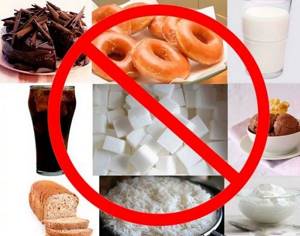
There are a number of products that cause constant sweating on the face. These include: various spices, sausages, especially with fat, fatty meat, butter. Spicy foods, as well as fried and excessively salted foods, cause severe irritation of the sebaceous glands and, as a result, the skin of the face will constantly “shine” with a coating of fat and sweat. Also, foods that are undesirable for people with problem and oily skin include flour products, chocolate (no matter what kind), coffee and sweets.
